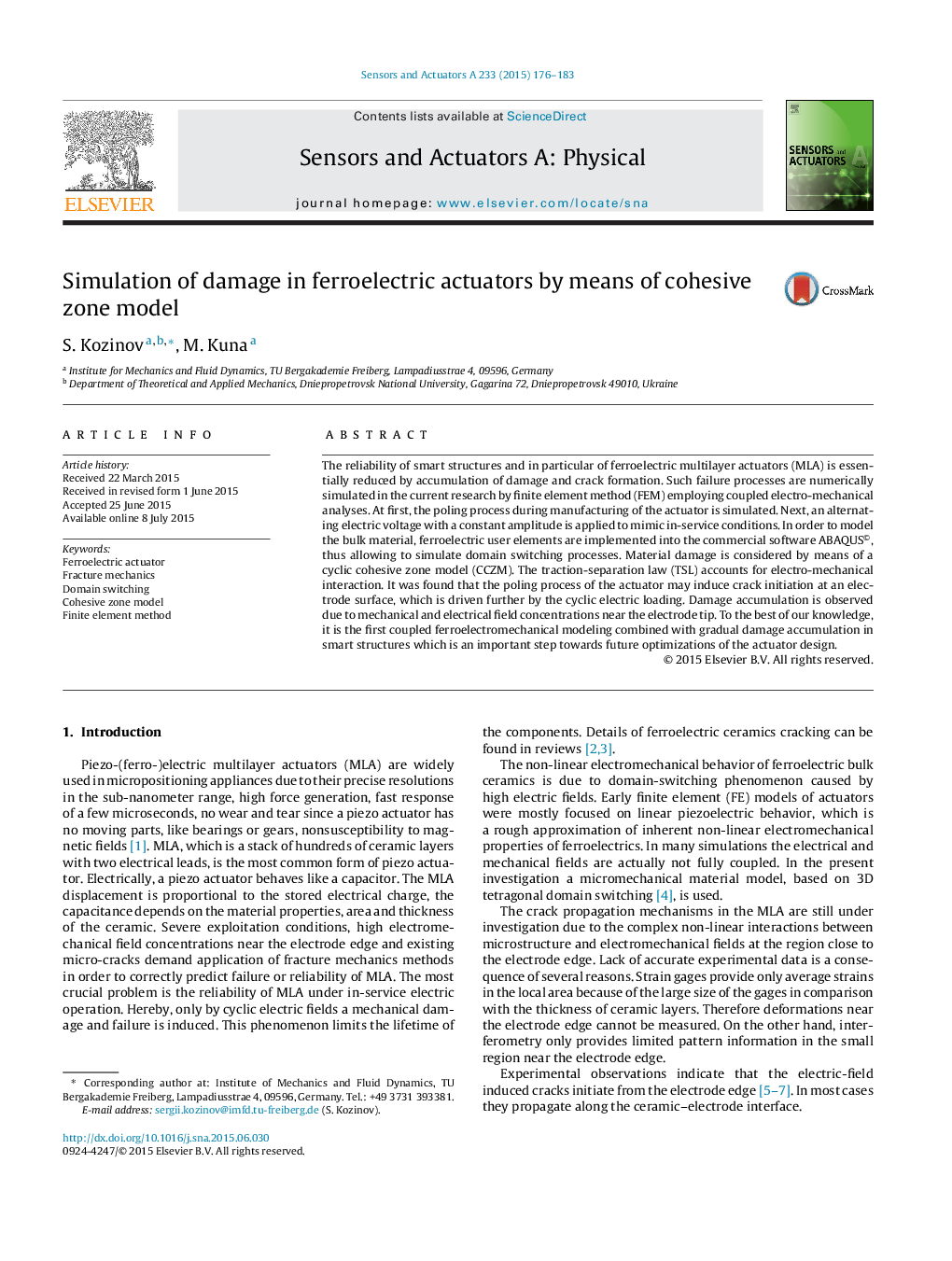| Article ID | Journal | Published Year | Pages | File Type |
|---|---|---|---|---|
| 7135708 | Sensors and Actuators A: Physical | 2015 | 8 Pages |
Abstract
The reliability of smart structures and in particular of ferroelectric multilayer actuators (MLA) is essentially reduced by accumulation of damage and crack formation. Such failure processes are numerically simulated in the current research by finite element method (FEM) employing coupled electro-mechanical analyses. At first, the poling process during manufacturing of the actuator is simulated. Next, an alternating electric voltage with a constant amplitude is applied to mimic in-service conditions. In order to model the bulk material, ferroelectric user elements are implemented into the commercial software ABAQUS©, thus allowing to simulate domain switching processes. Material damage is considered by means of a cyclic cohesive zone model (CCZM). The traction-separation law (TSL) accounts for electro-mechanical interaction. It was found that the poling process of the actuator may induce crack initiation at an electrode surface, which is driven further by the cyclic electric loading. Damage accumulation is observed due to mechanical and electrical field concentrations near the electrode tip. To the best of our knowledge, it is the first coupled ferroelectromechanical modeling combined with gradual damage accumulation in smart structures which is an important step towards future optimizations of the actuator design.
Related Topics
Physical Sciences and Engineering
Chemistry
Electrochemistry
Authors
S. Kozinov, M. Kuna,
